How Three Men Lost in Space: Apollo 13 Disaster
This is the captivating story of courage, teamwork, and the unyielding spirit of exploration that defined Apollo 13.

On April 11, 1970, aiming to become the third mission to land humans on the Moon, Apollo 13 began its journey. However, three days into the voyage, disaster struck when a routine procedure triggered an explosion in one of the spacecraft's oxygen tanks while it was over 200,000 miles from Earth. This explosion ruptured the oxygen tanks, forcing the cancellation of the lunar landing. The crew faced immense challenges as they struggled to survive the journey back to Earth, subsisting on only 6 ounces of water per person per day, enduring severe power rationing, and contending with plummeting temperatures inside the cabin, which dropped below 4°Celsius.
Despite its original purpose as a lunar landing mission, Apollo 13 became a story of resilience and ingenuity as both the crew and ground control team rallied to navigate the crippled spacecraft safely back home. Their harrowing journey captured the attention of the entire world, as the threat to the lives of the three astronauts kept people around the globe on edge. Although ultimately not achieving its intended goal, the mission stands as a testament to the bravery and resourcefulness of all involved, highlighting the risks and challenges inherent in space exploration.
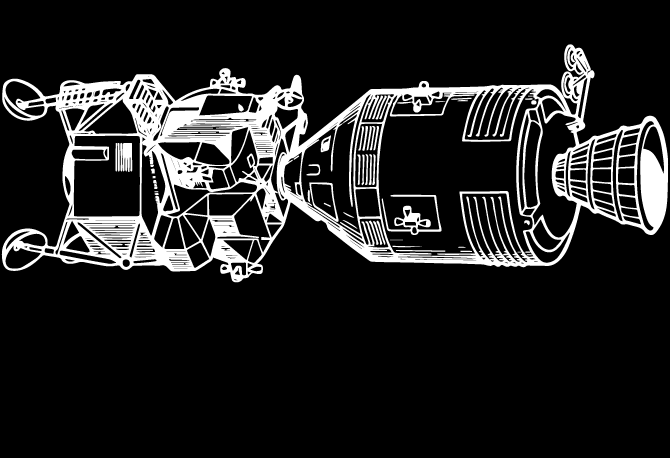
Apollo 13
Before we start, it's essential to understand the different parts of the spacecraft. The craft comprises three integral modules: the command module, the service module, and the lunar module. Each plays a vital role in the mission's success. The crew's living quarters contain the command module and the cockpit, where the astronauts control the spacecraft's systems and instruments. It also houses the engine for the return trip and the parachutes and heat shield needed for re-entry into the Earth's atmosphere. Meanwhile, A service module, also known as an equipment module or instrument compartment, is a component of a crewed space capsule containing a variety of support systems used for spacecraft operations. Lastly, the lunar module facilitates the descent and exploration of the lunar surface.
Journey start
After performing the successful moon landings of Apollo 11 and Apollo 12, NASA pulled ahead of the Soviet Union as the undisputed leader in the space race. On April 11, 1970, Apollo 13 was launched from Cape Canaveral, Florida. The crew was led by Jim Lovell, an experienced NASA astronaut who had completed missions in both the Gemini and Apollo programs. Joining him were John "Jack" Swigert, serving as the command module pilot, and Fred Haise, designated as the lunar module pilot.
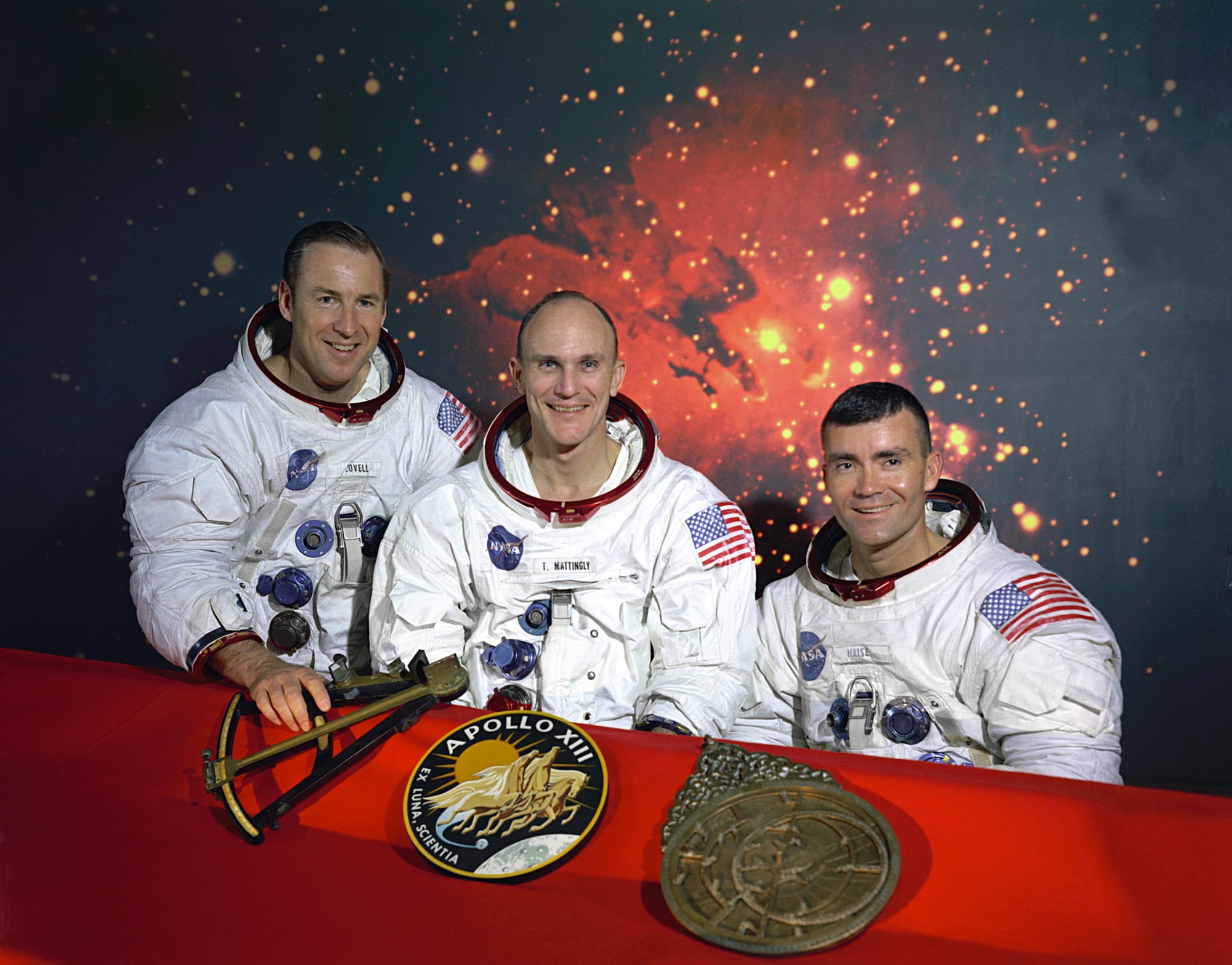
But Initially, Command Module Pilot Ken Mattingly was planned to remain in lunar orbit in the command module Odyssey. At the same time, Commander Jim Lovell and Lunar Module Pilot Fred Haise were scheduled to land in the lunar module Aquarius and explore the Fra Mauro region of the Moon. However, four days before launch, it was determined that Mattingly had been exposed to measles and had no immunity. To avoid Mattingly becoming sick during the flight, he was replaced by his backup, Jack Swigert.
Neither Swigert nor Haise had previous spaceflight experience at the time of the mission. The three astronauts were at the Command Module, nicknamed Odyssey, at the top of a Saturn V rocket. Their mission was to reach the Fra Mauro highlands of the moon and explore the Imbrium Basin, conducting geological experiments along the way.
On that day, NASA experienced a sobering reminder of declining interest in space exploration. Only around 200,000 spectators turned out for the launch, a stark contrast to the 7 million who had gathered to witness the liftoff of Apollo 11 nearly a year prior.
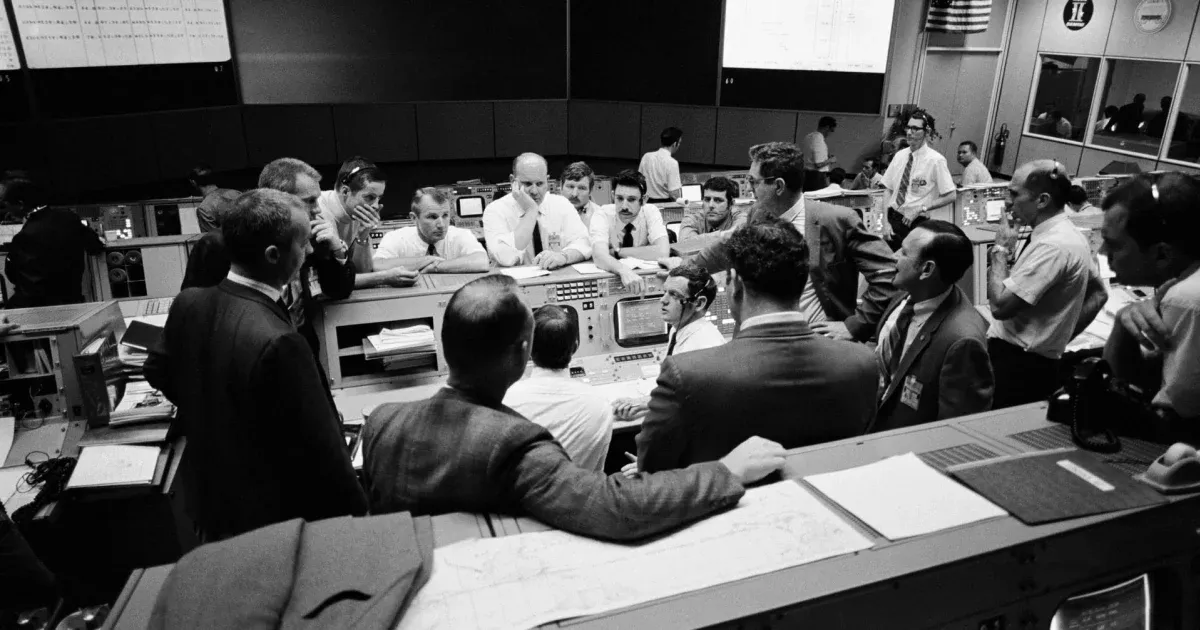
"Houston, we've had a problem here."
As the mission approached its 56th hour and ventured around 205,000 miles from Earth, the crew had just wrapped up a live television broadcast, although few television stations had shown interest. The following day was scheduled for Apollo 13's planned entry into the Moon's orbit, with Lovell and Haise poised to become the fifth and sixth men to walk on the lunar surface. Noticing a slight pressure drop, Houston flight controllers wanted to check the oxygen levels in the Service Module, so they asked Swigert to perform a routine cryo stir on the tanks.
Here's where everything took a drastic turn for the worse. The crew heard a loud bang from outside and called Houston to report, with Swigert saying, "Okay, Houston, we've had a problem here."
Concerns escalated as the crew and ground personnel observed troubling readings indicating problems with the oxygen tanks and fuel cells. Oxygen tank two had been completely depleted, while tank one steadily decreased. Initially, some at Mission Control suspected instrumentation faults, but Lovell's observation of gas visibly leaking from the Service Module confirmed the seriousness of the situation.
Later investigation revealed that an overload in an oxygen tank during routine testing caused the heater switch to short out, resulting in the circuit breaker becoming fused shut, effectively turning the tank into a bomb. This explosion occurred when Swigert initiated the stirring process, blowing a 13-foot panel off the Service Module. As power and oxygen levels rapidly declined, the objective of Apollo 13 shifted from a lunar landing to a critical mission: ensuring the safe return of the crew to Earth.
Far from the moon
An hour after the explosion, mission control directed the crew to relocate to the Lunar Module, which possessed ample oxygen, and employ it as a lifeboat. The decision was made to conserve the remaining fuel cell for the Command Module to ensure it could be utilized during re-entry, a task not possible in the Lunar Module, known as Aquarius. Consequently, the crew needed to power down the Command Module and transfer to the Aquarius, which could serve as a lifeboat due to its independent life support system.
Originally intended solely for transporting astronauts between the orbiting Command Module and the lunar surface, the Lunar Module was designed for two astronauts to undertake a lunar visit lasting approximately 20 hours. The journey back to Earth would necessitate all three men cramped inside the capsule for four or five days.
As the spacecraft drifted 157 miles beyond the moon's far side, another maneuver was planned to speed up the journey two hours after pericynthion, the closest approach to the moon. There was debate over whether the Service Module should be jettisoned to increase speed further. Still, concerns were raised about exposing the Command Module's heat shield to prolonged exposure to the frigid temperatures of space, potentially risking damage upon re-entry. Additionally, this option would require utilizing all remaining fuel, meaning no other course corrections could be performed later. NASA ultimately opted for the safer alternative of a four-minute burn, which was expected to trim 12 hours off the flight time and ensure a targeted landing in the Pacific Ocean. The crew executed another successful burn nearly 24 hours after the initial explosion.
Conditions inside the Lunar Module proved challenging. The crew reduced water rations to one-fifth to conserve energy and endured cabin temperatures just above freezing. An issue arose with the square lithium hydroxide canisters from the Command Module being incompatible with the round openings in the Lunar Module's environmental system, posing a problem for removing carbon dioxide.
With rising carbon dioxide levels becoming a concern, the Lunar Module's scrubbing system, designed for two occupants, couldn't adequately handle the air for three. Additionally, calculations indicated that the lithium hydroxide canisters, responsible for removing CO2, wouldn't last until their return. Although the Command Module carried its supply of canisters, they were incompatible with the Lunar Module's system. Houston had to improvise a filtration method using only resources available onboard Apollo 13. After 35 hours of testing, the Mission control improvised an adapter using onboard materials, and the crew successfully replicated their model. They devised a solution using spacesuit hoses and plastic bags.
Navigation was also quite challenging. Both the astronauts and mission control had to manually determine the propulsion and direction changes needed to steer the spacecraft back to Earth.
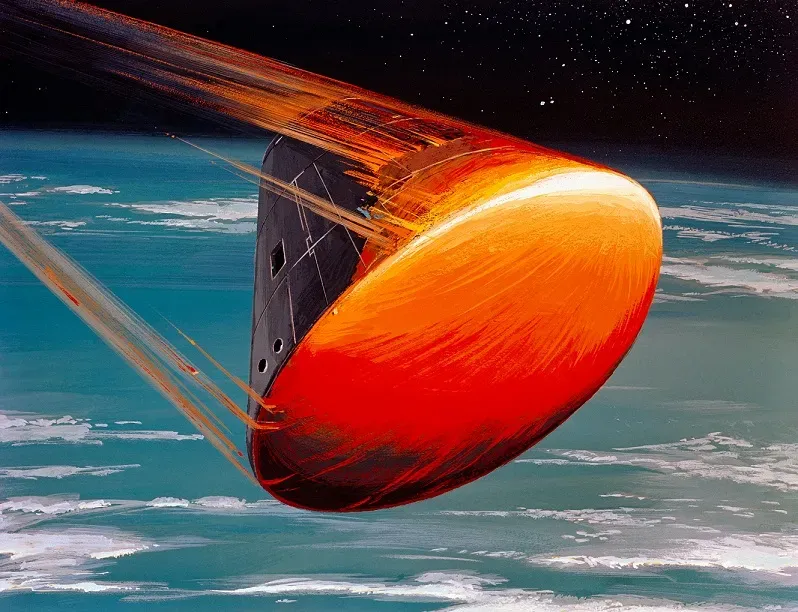
Detailed video on Apollo 13 disaster
Reentry to earth
The mission control team devised a trajectory utilizing the Moon's gravity to slingshot the spacecraft back toward Earth, extending their flight time but allowing ground control to coordinate a safe reentry plan while conserving vital resources onboard. On April 14, Apollo 13 completed its orbit around the moon. Swigert and Haise captured images while Lovell communicated with mission control regarding the crucial maneuver ahead: a five-minute engine burn to provide the Lunar Module with enough velocity to return home before its resources were depleted. Two hours after passing the moon's far side, the crew aligned with the sun and ignited the Lunar Module's small descent engine. The procedure proved successful, setting Apollo 13 on its course back home.
On April 15, 1970, Apollo 13 positioned itself on the moon's far side 158 miles from the lunar surface. Simultaneously, it soared to a staggering 248,655 miles above the Earth's surface. Consequently, the crew of Apollo 13 established a Guinness World Record for the farthest distance from Earth ever reached by humans.
Next on the agenda was to discard the damaged Service Module while utilizing the Lunar Module thrusters to navigate a safe distance away from it. This marked the crew's initial observation of the explosion's magnitude as they conveyed the extent of the damage to ground control. Subsequently, the jettisoning of the Lunar Module followed, with a specially devised procedure implemented at the eleventh hour to ensure a safe separation by pressurizing the connecting tunnel before release. The calculations proved successful, and the crew bid farewell to Aquarius, recognizing its pivotal role in their journey thus far.
Lovell, Haise, and Swigert were huddled in the chilly lunar module for three long days. Amid these harsh conditions, Haise fell ill with the flu. On April 17, a last-minute navigational adjustment was executed, utilizing Earth as a guide for alignment. Following this, the Command Module was successfully re-pressurized and powered up, and One hour before re-entry into Earth's atmosphere, the Lunar Module was detached from the Command Module.
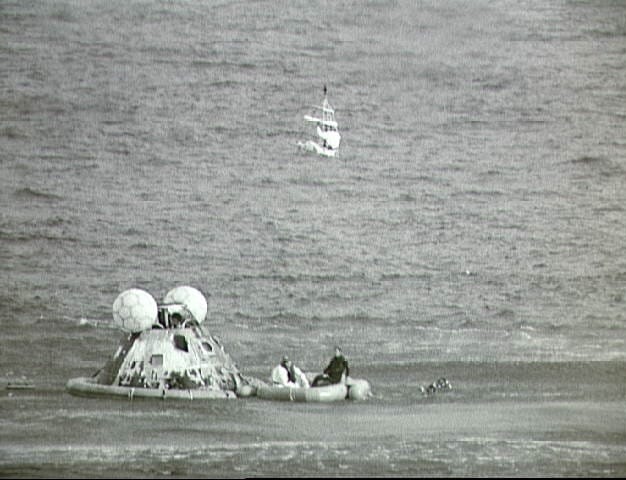
Back to Earth
The spacecraft reentered Earth's atmosphere around 1 p.m. on April 17, 1970. As the Odyssey descended, tension gripped the crew and the watching world. The intense heat generated during re-entry caused ionized air around the craft, resulting in a complete communications blackout. For over four agonizing minutes, NASA anxiously awaited any sign of contact, fearing potential failures of the shields or parachutes. Eventually, after a prolonged blackout period, the crew established communication. They had returned home, landing in the Pacific Ocean, where the USS Iwo Jima rescued them. Despite the challenges, the mission was called a "successful failure," demonstrating NASA's ability to excel even in the most critical circumstances.




